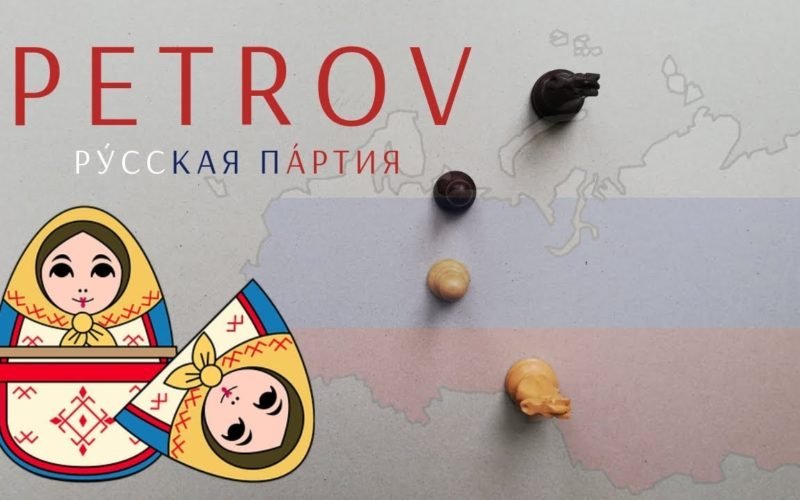The Petrov (also known as the Russian game or Russian defense) is the strongest alternative to Nc6 black has at his disposal!
The opening was named after Alexandar Petrov, a Russian master from the 19th century. Its other name, the Russian, came about because it was popular in the Soviet Union and popularized by Soviet players.
The Petrov Defense is the second most common way to meet 1. e4, Nf3 by white. Instead of simply defending his e5 pawn with Nc6, by far the most common continuation, in the Petrov black counter attacks instead, and creates a threat of his own. By playing 2…Nf6, black is putting pressure on the e4 pawn.
The opening has a reputation (and rightfully so) for being equal, drawish, and not too exciting. The reason for that is that the pawn structure which results out of it is most often completely symmetrical, which gives neither side too many attacking chances. The second reason is that the queens tend to get traded off early on.
Despite that, many strong players have employed it successfully. A special mention should be given to Fabiano Caruana, one of the main exponents of the opening among the world’s elite grandmasters today. He uses it over and over again and achieves great results. By great, I mostly mean draws (which is considered a success with black at 2800 level).
The Petrov is, therefore, a peaceful alternative to theory rich Ruy Lopez or the Italian, and with it you can avoid tons of opening theory and reduce your preparation significantly. The fact that it results in symmetrical or queenless middlegames doesn’t mean that you automatically play for a draw though (especially on lower levels), and it can still be a fighting defense for black!
After the opening moves: 1. e4 e5 2. Nf3 Nf6,
white has three options:
3. Nc3 Three Knights Game – this move is interesting, but, depending on what black does, it can transpose to the four knights and be equal, which makes it a less attractive move for white.
3. d4 Modern Attack (Steinitz) – an interesting sideline, great for putting the Petrov player on the back foot and getting him out of his comfort zone.
3. Nxe5 – the main move. After this move, and the forced …d6 4. Nf3 Nxe4, white can now choose between three completely different continuation. These three moves are the most popular variations of the Petrov:
5. d4 Classical
5. Nc3 Nimzowitsch Attack – the most aggressive way for white to play. Almost always going for opposite side castling and a quick attack!
5. Qe2 Cozio (Lasker Attack) – might seem aggressive, but it’s quite equal in fact due to the early queen trade.
If you would like to support the channel and my quest to chess improvement, you can donate here: https://www.paypal.me/HangingPawns
Any support is greatly appreciated! Thank you!
The next tournament abroad I plan to play is at the start of July in Slovenia. The trip, accommodation, entry fee and food come out at roughly 860$. So far I am at 127.7/860$ (14.8%).
Thank you for the support so far!
Ken A., Debbie and Brian T., Philip D., Alexandre M., Pascal S., Daniel N.
#chess

